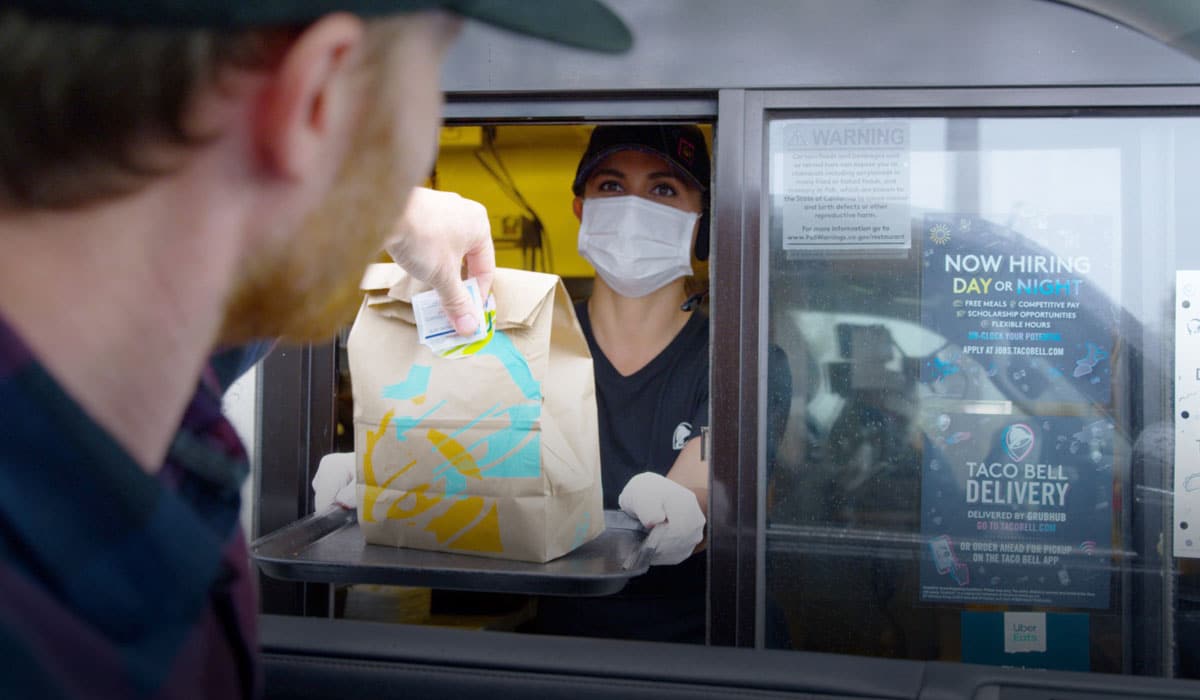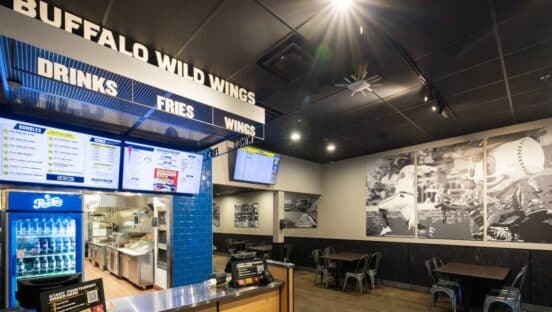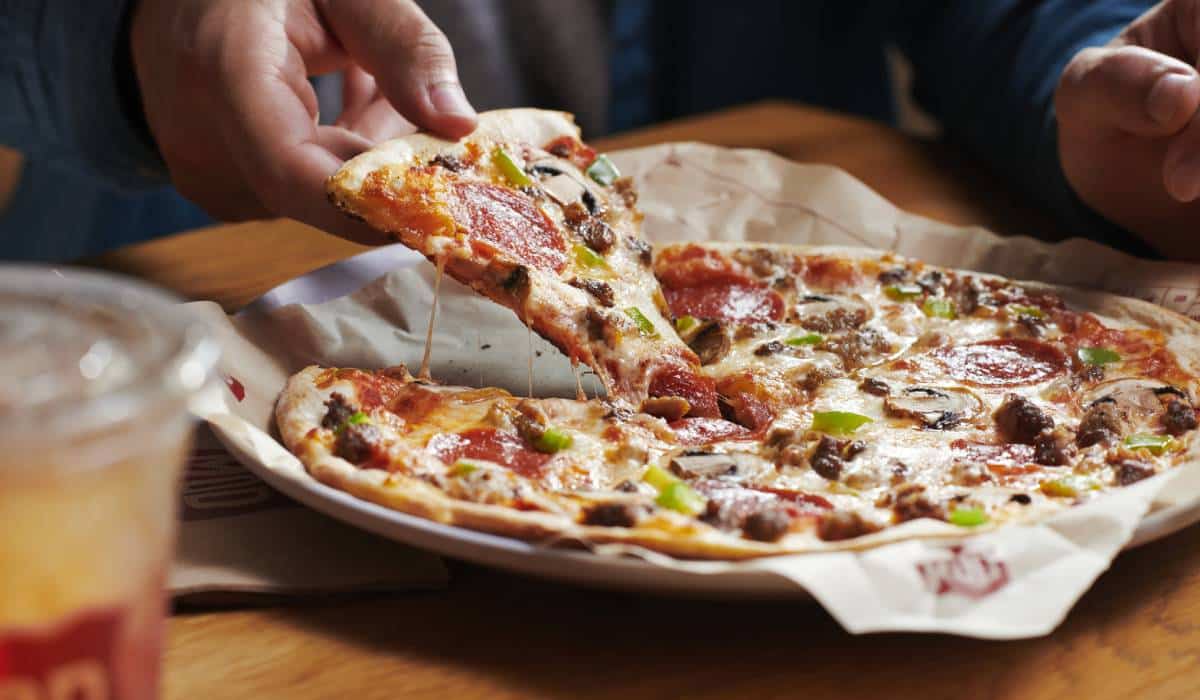Few things about COVID-19 and the restaurant response could be mistaken for simple. Yet two of the most-pressing questions facing operators today are straightforward in nature: How have guest expectations changed? And what does a great restaurant experience look like in pandemic times?
A pretty widespread observation, as TGI Fridays chief experience officer Sara Bittorf recently explained, is that the current guest is more forgiving. TGI Fridays collected feedback from several restaurants and found that, while the experience changed, people were willing to overlook much of it. Masks on servers. Quieter music. “All of those things are all important, and they’re willing trade-offs to get back inside the restaurant,” Bittorf said.
People were simply grateful to get a slice of their old lives back. This doesn’t mean restaurants are off the hook, though. In fact, it’s really just a different bar to measure up against. Guests might be more lenient with cold French fries, but far less so when it comes to a dirty bathroom. Before, frequency was a high-stakes aim for restaurants that came down to whether or not someone picked one restaurant over another. Bad service? There are plenty of choices that do it better.
Today, it’s whether or not restaurants make a guest feel safe. Or did they make the leap of faith worth it? In that respect, not much has changed. Inspiring a repeat visit starts on the first experience. As “Bar Rescue” host and industry personality Jon Taffer likes to say, if a guest went to a restaurant for the first time and had a flawless experience, the statistical likelihood of them returning is roughly 40 percent. The second time they have a flawless experience, it crawls to 42 percent. But the third time, it’s over 70 percent. So you’re talking about marketing to three visits, not one, which is something Taffer believes a lot of operators miss.
READ MORE: RESTAURANT SALES DECLINE INTO THE SINGLE-DIGITS AFTER 21 WEEKS
Those numbers translate to a COVID-19 world, too. They might even be steeper since there’s less discovery in the decision-making process. People have a smaller rotation of favorite spots—something that stems from a couple of factors. One, trust is where the market-share battle is forged today, as much as anything else. And two, which restaurant is actually open or accessible plays a leading role.
If restaurants can understand what their core guests want in a pandemic setting, and deliver on that promise, their road to becoming a “go-to” has a solid good chance of sticking. Familiarity, accessibility (curbside when they want it, digital ordering if they need it, drive thru, delivery, etc.) and execution are the chips on the table.
People want to go out to eat, but they also want to feel safe. And they want to be compelled to do so—whether that comes from value, variety, community, or convenience.
Toast recently shared results from a poll of 700-plus U.S. consumers on their dining and delivery preferences. The goal: to develop a guide on the restaurant guest during COVID-19.

How are guests discovering restaurants?
Almost 50 percent (49) say they’re relying on recommendations from friends and family.
Who do you trust in a global crisis? Review sites or your inner circle? Toast said restaurants should create the types of experiences that encourage loyal guests to share them. Some leading brands incentivize diners to share positive experiences on social media or online review sites through contests and gift cards. Especially now, guests are sharing perspectives on safety and convenience with friends and family. Going back to Bittorf and TGI Fridays’ observation, there is power in vulnerability right now. Customers understand the situation restaurants are in and want to help.
A study from The National Restaurant Association found that 78 percent of respondents agreed going out to their favorite spots was one of the things they missed most since COVID-19’s onset.
So, asking them to help and fill out a review? That’s a much different ask than it was pre-virus. And likely to be looked at as less self-serving.
Thirty-five percent are turning to online reviews.
As Toast points out, there isn’t much restaurants can do, as always, to stop guests from leaving negative reviews. But what they can do is claim their business profile on sites like Yelp and TripAdvisor and maintain a brand image. Responding to positive and negative feedback lends a restaurant more credibility and puts a personality behind the name. Just like before, negative feedback can be constructive at times. Say you see five people on one shift complain about the way tables are being cleaned. Everybody is a critic, but there are patterns in the noise.
TripAdvisor just launched a “Contactless Menus” solution directly from restaurant’s management center on the site. It’s free to any restaurant that added a menu link to their TripAdvisor listing. The feature automatically generates a QR code operators can download and post throughout their business. Diners then scan the code directly to their phone to access the menu. It’s specific to each restaurant and doesn’t change, even if the menu is updated.
Thirty-five percent also picked the restaurant website as their portal in.
Toast suggests restaurants turn to cost-effective solutions if they’re lacking in this department, builders like Squarespace and BentoBox. Showcase the menu and clearly point visitors to important information they need, Toast said, all the while integrating it with technology like online ordering and reservation software.
As many restaurants have discovered, there’s a lot more opportunity lately to inspire one-to-one engagement with guests. Plenty of former, loyal dine-in guests are looking up their favorite restaurants’ digital properties because they miss them, which is a completely new dynamic. They once separated restaurants into different occasion boxes. My third-party delivery, I want a convenient meal group, for instance, and the let’s go spend an hour to connect options.
These days, the same customer might miss the food of the restaurant they historically dined in for. Or they just want to support it. And so they’ll go online and see the options. Does my favorite Italian joint offer curbside or delivery? They’re going direct to the source. So the former app-loyal versus brand-loyal debate has loosened a bit. Previously, guests had their, say, top DoorDash restaurants, where products reigned overs specific brands, and then their frequent spots. The lines are blurring.
Twenty-seven percent are tapping Facebook.
Toast explained that Facebook remains a powerful tool for discovery, either through guests’ own research, recommendations from friends, or via Facebook ads. Naturally, this means restaurants should update their Facebook business page and include important and relevant information, as well as remain active by regularly sharing content, photos, and updates.
Here’s how the rest of the list played out for “how are guests discovering restaurants?”
- Restaurant social media: 25 percent
- Apps like DoorDash or Grubhub: 24 percent
- Online articles: 19 percent
- Instagram: 18 percent
- YouTube: 15 percent
- Newspapers: 15 percent
Beyond how consumers actually find places to eat out, how they communicate with them is also critical in a COVID-19 landscape. Operators have a lot of updates to share and need to assure guests, loyal and prospective, that it’s safe to dine there.
How it’s happening:
- Restaurant website: 48 percent
- Calling the restaurant directly: 36 percent
- Google listing: 30 percent
- Restaurant Facebook page: 29 percent
- Restaurant Instagram profile: 18 percent
- Yelp: 17 percent
The takeaway here, Toast said, is that restaurants should make sure they’re ready to answer guests’ questions about COVID-19 when they reach out. Regularly update all guest-facing channels, like the website and Google My Business Listing, to ensure people can find whatever they’re looking for. In today’s climate, no updates or an inactive online presence doesn’t just suggest a restaurant that’s uncomfortable with the internet—people are likely to assume you’re closed.
When they get there
The on-premises dining experience was plenty complicated before COVID-19. What’s really changed now is the prevalence. In July, on-premises accounted for 13 percent of restaurant chain visits across both categories (it was only 5 percent in April), according to The NPD Group. Yet at the start of the year, before the pandemic threw its first haymaker, it accounted for 33 percent of visits.
There are simply less opportunities to get this right. And what constitutes that has changed.
From Toast, here are five ways to create a great on-premises dining experience.
1. Create and train your team on new operating procedures to adhere to state and local guidelines and keep safety and hygiene top of mind.
2. Find ways to adapt your people operations and let your staff know you’ve got their back with traditional or alternative benefits.
3. Keep a close eye on your business’s finances. See where you can bring down costs, and identify which areas of your business require close attention.
4. Identify technologies that will allow you to create a safer, more streamlined experience for both guests and staff.
5. Despite other changes to the dining experience, guests still care about your restaurant’s food and hospitality more than anything else.
What’s most important to guests when returning to on-premises dining?
- Seeing staff taking safety precautions and wearing PPE: 64 percent
- Hand sanitizer at the table: 49 percent
- Single-use menus: 40 percent (TGI Fridays went a step further and made it so menus could serve as a placemat. People don’t even have to touch the table if they don’t want to).
- Contactless payment or pay at the table capabilities: 38 percent
- Single-use utensils: 37 percent
- A written statement about cleaning procedures posted in the restaurant: 37 percent
- Order at the table capabilities: 33 percent
Toast’s research also dived into what’s concerning customers most.
- Cleanliness of tables, surfaces, and more: 52 percent
- Food safety and handling: 48 percent
- Staff wearing and frequently changing PPE: 45 percent
- Staff health: 44 percent
- Kitchen cleanliness: 42 percent
- Occupancy numbers: 36 percent
- Contact with servers and staff: 30 percent (Returning to TGI Fridays, what they’re doing is having servers ask patrons if they can approach before doing so).
What to do?
A common, but dicey reaction to limited capacity has been to charge customers more. Operators are strapped with new pressures, from PPE to training to rising commodity costs. Whether or not this flies with customers boils down to the type of core guest. Toast asked this of its respondents:
- Would pay $2–$5 more per bill: 35 percent
- I’m not willing to pay more: 20 percent
- Would pay $1 more per bill: 18 percent
- Would pay $6–$10 more per bill: 17 percent
- Would pay $10-plus more per bill: 10 percent
“The important thing is to be communicative and remain honest with your guests,” Toast said. “Communicate any changes in menu prices so they aren’t caught off guard, and let them know what any new menu price increases or surcharges are going toward.”
In terms of tech adds, 37 percent of respondents said drive-thru availability would be “extremely important” moving forward. Contactless/mobile payment availability (34 percent), pay-at-the-table technology (33 percent), and online ordering (33 percent) also received high grades.
Inspiring frequency is both a unique opportunity and convoluted challenge today. But it’s essential because the heavy lifting is much heavier than usual. Restaurants need to drive repeat users to justify an ROI suddenly muddied by the steep price tag of COVID-19 safety protocols.
Here are four ways to engage with guests after they’ve dined, from Toast.
1. Encourage guests to give you feedback directly to learn what they like and if they’d make changes to their experiences.
2. Use email marketing to communicate with guests and let them know about how you’re reopening or COVID-19 restrictions, promotions, or menu updates.
3. Use customer data from your technology platforms to tailor your communications and marketing campaigns.
4. Use customer loyalty programs to encourage guests to return and spend more by earning reward points.
Which factors influence if guests return to a restaurant?
- Quality of food: 50 percent:
- Attention to cleanliness and safety: 43 percent (the now-familiar unicorn of the COVID-19 market-share battle)
- Value: 31 percent
- Menu options: 27 percent
- Desire to support local businesses: 22 percent
- Staff friendliness: 21 percent
- Proximity: 19 percent
- Order ahead: 17 percent
- Delivery speed: 16 percent
- Discounts and offers: 15 percent
- Presence on delivery apps: 12 percent
- Social media or email marketing: 12 percent
- Loyalty program: 9 percent
- Events: 8 percent
When it comes to rewards and loyalty programs, here’s what customers are looking for:
- Discounts on menu items: 79 percent
- Free menu items: 78 percent
- Rewards status/points tiers: 57 percent
- Early access to new menu items: 47 percent
- Store merchandise: 37 percent
And what about emails?
- Specials and discounts: 69 percent
- Updates on reopening and COVID-19 safety precautions: 52 percent
- New menu items: 51 percent
- Birthday coupons: 46 percent
- Upcoming events: 31 percent
- Humor: 19 percent
- Staff spotlights: 17 percent
- Blog posts: 16 percent
“Consistent, reassuring communication is a great way to build relationships with your guests right now,” Toast said. “… By sending targeted email messages at the right moment to the right people about promotions you’re running or new menu items, you can encourage customers to make purchases when you want them to.”
Some digital points
The majority of guests Toast surveyed said there would be no change to their dining preferences after restaurants reopen and resume on-premises dining. However, a portion of respondents shared they would order takeout and delivery more than they did prior to COVID-19.
This points to an optimistic turn brands like Chipotle have highlighted in recent quarterly reports—digital gains are sticking, to some degree, even as dine-in returns.
Fifteen percent of respondents said they would order takeout more, while 12 percent noted they would order takeout “significantly more.” Thirteen percent said they’d order delivery more. Ten percent said they’d order delivery “significantly more.”
Here are five tips from Toast to develop a robust off-premises dining experience.
1. Invest in an online ordering system to maintain greater control over the online ordering dining experience and avoid the fees charged by third-party companies.
2. Create an off-premise-specific menu, prioritizing popular, profitable menu items that’ll travel well.
3. Provide a new guest experience for off-premise orders by incorporating elements of your restaurant’s ambiance and personality in every order.
4. Train your staff to handle off-premise orders with an off-premise training manual that standardizes operating procedures.
5. Maximize the discoverability of your restaurant’s website and create a digital presence to build relationships with customers and market your brand online.
How frequently are guests ordering online?
- A few times in the past month: 29 percent
- Multiple times a week: 25 percent
- Once a week: 22 percent
- I did not place an order: 14 percent
- Once a day: 6 percent
- Multiple times a day: 4 percent
From Toast’s data, it appears customers are ordering takeout more frequently than delivery, using different methods.
Seven percent reported ordering takeout through a third-party app multiple times a day. Nine percent said they’re ordering takeout through a restaurant’s app or website once a day. Sixteen percent reported ordering takeout through a restaurant’s app or website multiple times a week. And 20 percent said they’re ordering takeout through a restaurant’s app or website once a week.
“Guests’ current preference for takeout over delivery could point to potential concerns around the safety of food delivery,” Toast said. “While food delivery is still a popular off-premises channel, there are more variables involved, like delivery driver contact, that might make guests uneasy. And, at least for now, they might prefer the level of control over cleanliness and safety they get when picking food orders up themselves.”
When it comes to delivery, here’s what guests said they care most about:
- Quality of food when delivered: 65 percent
- Ease of ordering: 50 percent
- Attention to cleanliness and safety: 48 percent
- Value: 48 percent
- Speed: 45 percent
- Tracking driver progress: 26 percent
- Ability to gain loyalty points: 19 percent
And when ordering takeout:
- Quality of food when picked up: 57 percent
- Attention to cleanliness and safety: 40 percent
- Ease of ordering: 39 percent
- Speed: 35 percent
- Ease of pickup once arriving at the restaurant: 33 percent
- Ability to customize food order: 30 percent
- Sustainable food packaging: 21 percent
- Ability to gain loyalty points: 14 percent












